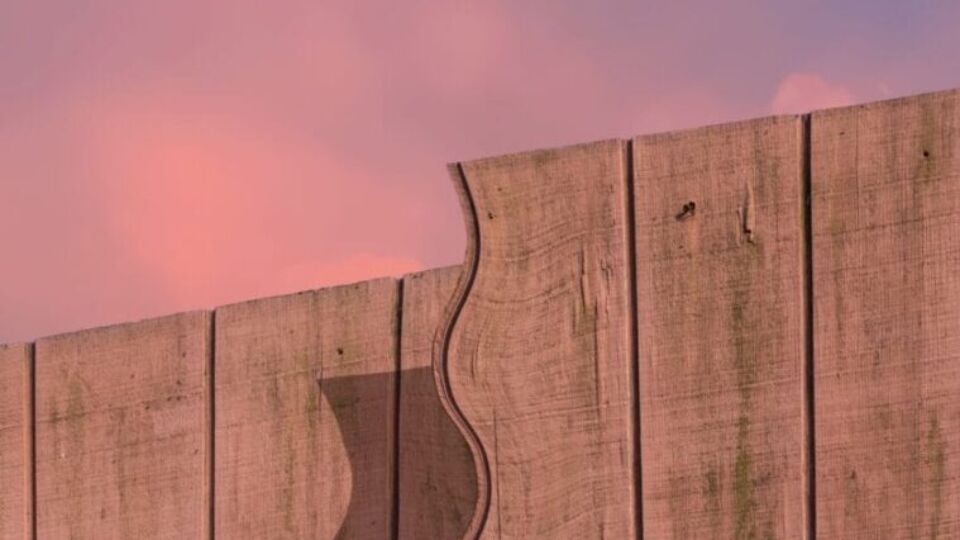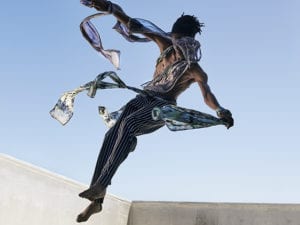The term “surrealist,”, according to Tate, was first coined by French avant-garde poet Guillaume Apollinaire in 1917. It appeared in the preface to one of his plays, meaning “beyond reality.” Seven years later, André Breton – leader of a new circle of Parisian creatives – published his Surrealist Manifesto, describing the movement as “pure psychic automatism.” Artists used the style to unlock ideas or images from their unconscious minds, depict dream worlds and seek political liberation. In the 100 years since Breton published his pioneering manifesto, artists such as Salvador Dalí, Dorothea Tanning, René Magritte and Dora Maar have made Surrealism one of the most influential movements in contemporary art – creating everything from lobster telephones to melting clocks. Today, we’re seeing a new generation take up the helm: Aïda Muluneh, Erik Johansson, Sandy Skoglund and Viviane Sassen are continuing their legacy. Here are five photographers whose work is part of this rich and vibrant tradition.

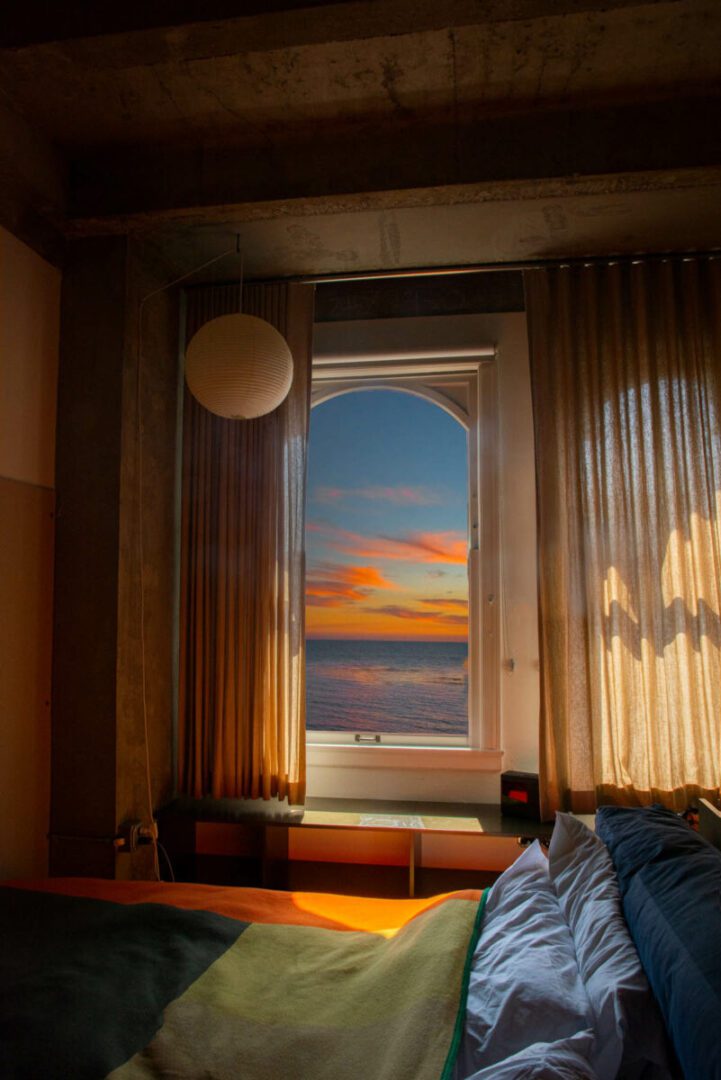
“I cannot travel abroad due to the restriction of my visa status. I am protected under DACA (Deferred Action for Childhood Arrivals) but I am unable to leave the USA if I want to return, and I haven’t been able to go back to South Korea for over 10 years. By manipulating images, I construct my own form of surreal escapism that helps to liberate me.” KangHee Kim’s collaged photographs begin with the documentation of seemingly “mundane” moments: the sun setting in an office, for example, or a bedside lamp illuminating a dusky hotel room. The artist creates portals to other worlds, where clouds billow on the surface of concrete, and suns glow beside traffic lights. In Kim’s ethereal compositions, window frames become invitations to the imagination; photography is a medium filled with freedom that moves beyond border.
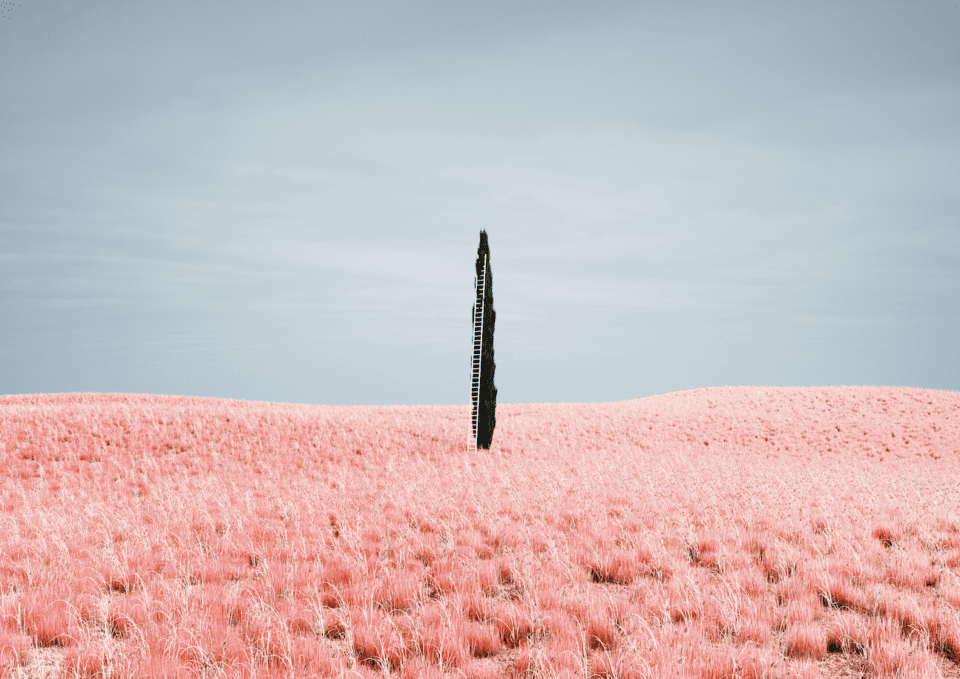
Massimo Colonna (b. 1986) is an Italian photographer, post-producer and retoucher who invents spaces that play with a sense of reality. His captivating portfolio is defined by vast open expanses, all shot on level playing fields. As viewers, we are often asked to gaze across similar horizon lines, considering their similarities and differences, from abundant landscapes to sparse concrete quarries. The Isolation series features stranded chairs, ladders and rubber rings amidst rolling fields spilling with pink, yellow and green plant life. It’s as if the world has been left to its own acts of rewilding. Meanwhile, the Global Warming series takes a stark grey quarry as its setting, with undulating piles of sand, rocks and sediment set amongst stark, browning trees. Ice creams melt into the tarmac, whilst plastic straws protrude from a drying puddle.
Massimocolonna.com | @m.a.s.s.i.m.o.c.o.l.o.n.n.a


When we think of a Surrealist object, what comes to mind? It might be Meret Oppen- heim’s (1913-1985) fur-lined teacup, for example, or the infamous lobster telephone by Salvador Dalí (1904-1989). Assemblage emerged in the 1930s as a new form of sculpture involving the amalgamation of easily obtained materials: found objects, or mundane and mass-produced items cheaply purchased at flea markets. Singapore- based Priscilla Ong continues this tradition, placing everyday things in new, often humorous, configurations. We see hands knitting with ramen noodles or grating a carrot with a parking ticket. A Polaroid camera prints out slices of processed cheese. Ong’s work focuses on minimalism, bright colours and puns – playing with inanimate items, manipulating and reconceptualising materials.
priscillaong.com | @priscillaong.co
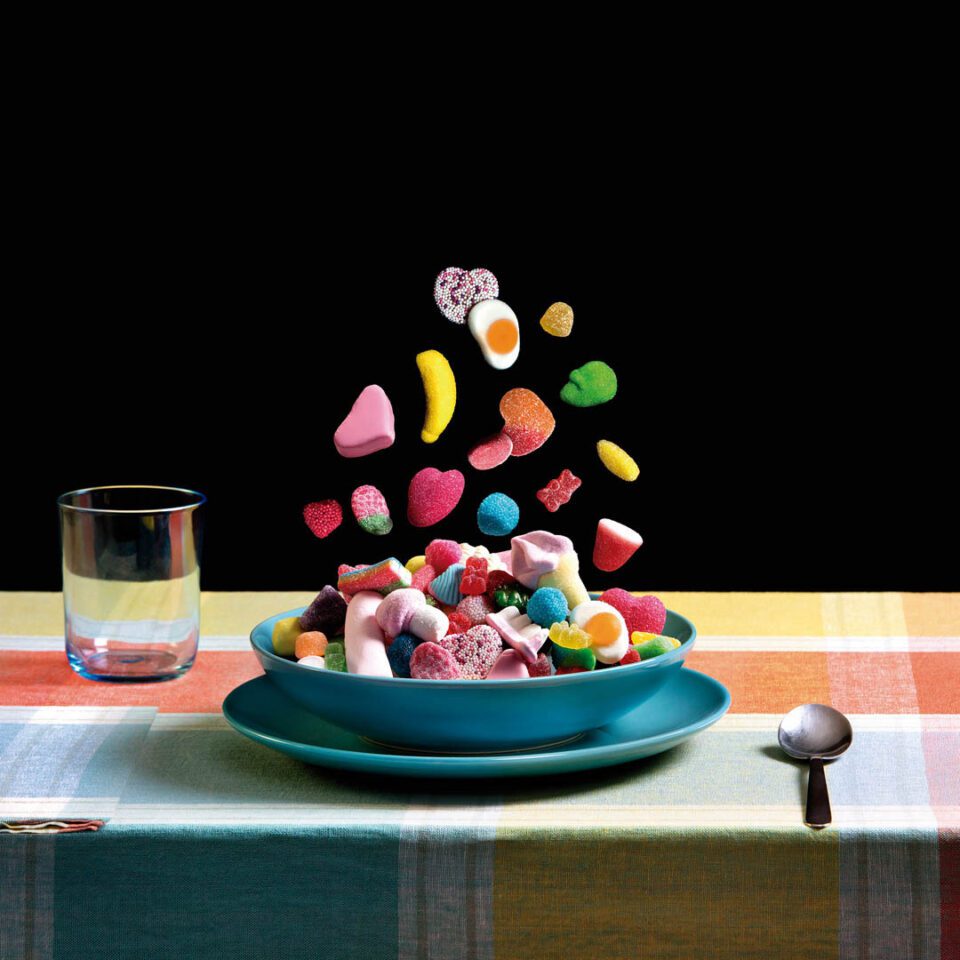
Confetti soup. Soap soup. Cloud soup. Rain soup. Miguel Vallinas Prieto’s (b. 1971) Suppen series visualises what happens when we let the imagination run wild. Each image takes the same starting point: a tablecloth, glass, plate and spoon, positioned against a dark backdrop. What unfolds is the stuff of daydreams. This world is one of endless creativity, where balloons rise, ceramics shatter and bubbles emerge from the dinner table. In one shot, a small tree grows from a pile of earth. In another, a boiled egg levitates in mid-air. Foam spills out as if from a bathtub, whilst a balloon suspends a rock dripping yellow liquid into a pristine white bowl. “I like to play with perception,” writes Vallinas Prieto. Driven by nostalgia and a love of storytelling, the artist transforms everyday materials into something that feels magical.
miguelvallinasartstore.com | @miguelvallinas
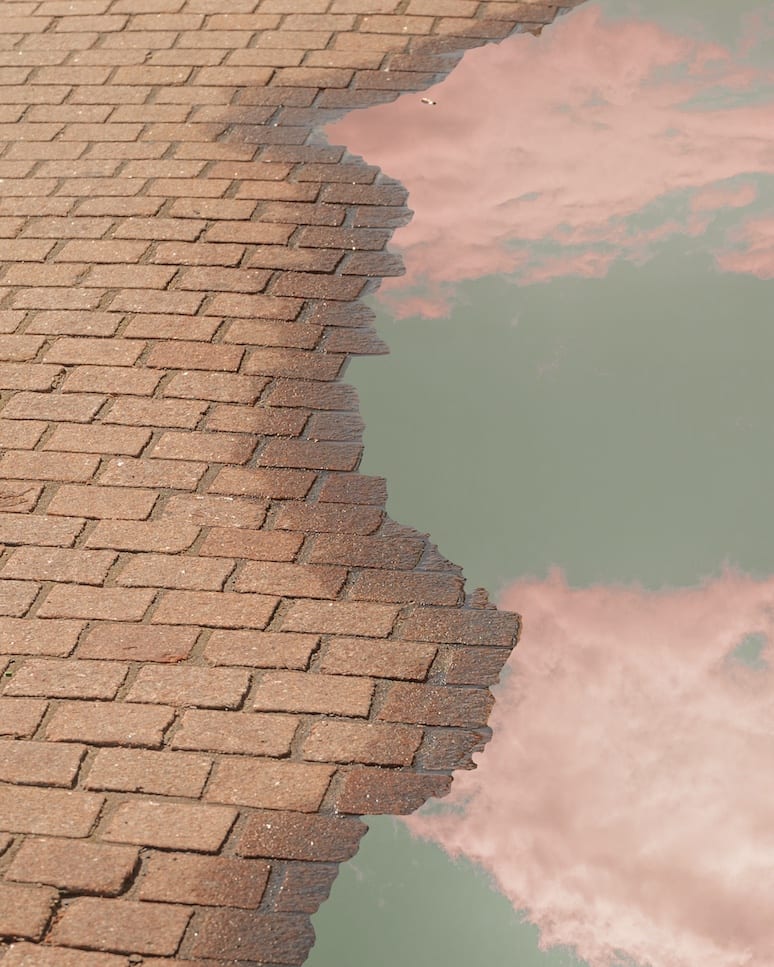
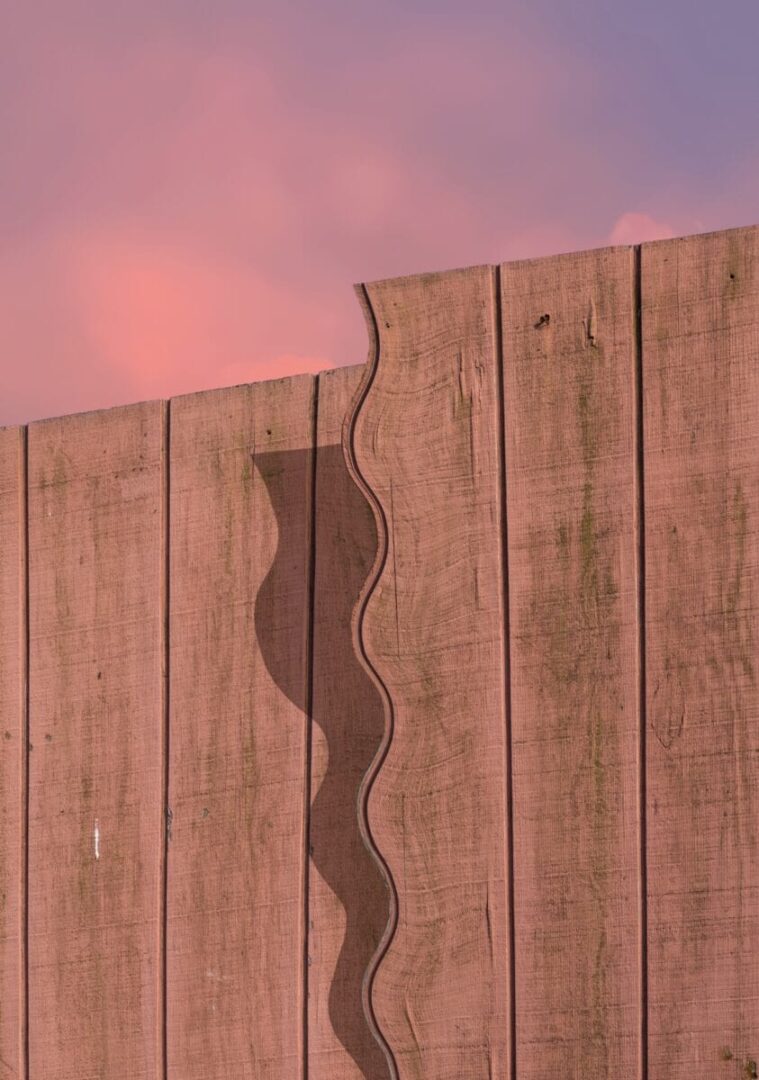
Alex Mitchell (b. 1992) is a photographer from Toronto, whose work explores the spectrum of Surrealism using an everyday lens. He transforms the mundane, applying a mix of strategic artificial light, rich colours, and a singular point of focus. Close cropping draws attention to material details. Puddle edges resemble waves lapping the shore, blurring the distinctions between up and down. Non-linear shadows create unexpected textures. Against a variety of seemingly quotidian objects, Mitchell calls upon fantastical colour schemes and skylines, resembling rare and unique sunsets – when the light has further to travel and blue rays scatters before they reach us. Pink and purple atmospheres pull the viewer into phenomenological scenarios, where each moment is unpredictable: ephemeral and temperamental.
Words: Emma Jacob
Image Credits:
1&9. Alex Mitchell, Recess (2020). Courtesy of the artist.
2. Images from Dreamer. Courtesy of KangHee Kim and Setanta Books.
3. Images from Dreamer. Courtesy of KangHee Kim and Setanta Books.
4. Massimo Colonna, from Ti trovo cambiato (Global Warming). Courtesy of the artist.
5. Image courtesy Priscilla Ong.
6. Image courtesy Priscilla Ong.
7. Images courtesy Miguel Vallinas Prieto, from the Suppen series (2019).
8. Alex Mitchell, Sodium (2020). Courtesy of the artist.


